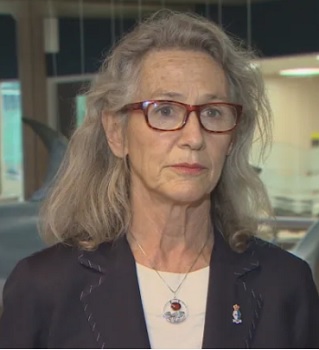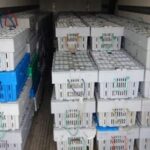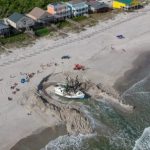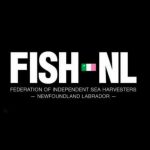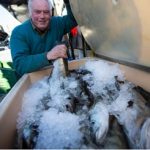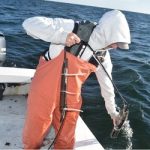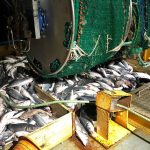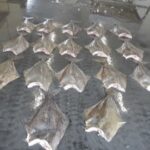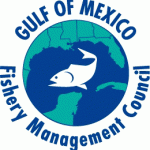Tag Archives: Gulf of St. Lawrence
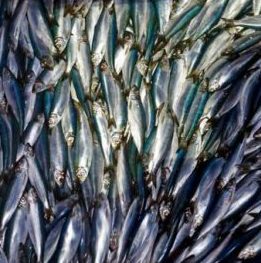
Bait Crisis: Lobstermen worry fishery closures will create bait supply issues
Last week, Fisheries and Oceans Canada shut down commercial harvesting of herring in the Gulf of St. Lawrence and Atlantic mackerel in Atlantic Canada and Quebec amid dwindling stocks. The two species are important sources of bait for the lobster industry. Some Island fishermen say they were caught off guard by the announcement as they prepare for setting day about a month from now. “It’s tough on fishermen because … we need the bait to fish lobster,” said Mallory Harris, who fishes in North Lake. Other fishermen said they’re already seeing the price of bait for lobster traps increase. >click to read< 08:14

Atlantic Canada snow crab fishery hopes for another banner year
But concern over high fuel prices, fear of U.S. recession dampens hopes for one Nova Scotia processor. The snow crab fishery in Atlantic Canada is gearing up in hopes of another banner season in 2022, buoyed by expectations of more quota, high prices and less competition from rival nations. But will rising inflation, especially in the United States, and uncertainty over the war in Ukraine dampen the spectacular returns in 2021 when the fishery was valued at nearly a billion dollars? >click to read< 10:04
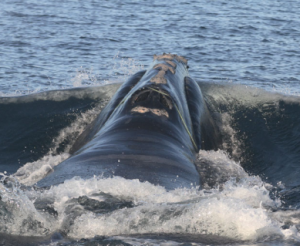
Right whale protection measures to return ahead of migration into Canada
The federal government has announced its fishery and vessel management measures for the 2022 season to protect North Atlantic right whales as the endangered animals migrate into Canadian waters. Officials said in a statement Thursday the Fisheries Department will once again implement seasonal and temporary fishing area closures in the Gulf of St. Lawrence, the Bay of Fundy and other “critical habitat areas” where whales have previously been sighted. They also say Transport Canada is again enforcing vessel traffic measures, including speed restrictions for vessels over 13 metres long, throughout much of the Gulf starting on April 20 to better respond to right whale presence. >click to read< 08:29
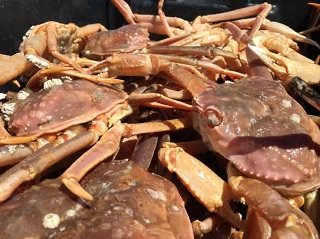
Demand is going to be strong! Remarkable snow crab season ahead for Gulf of St. Lawrence crabbers
The snow crab industry in the southern Gulf of St. Lawrence can expect an excellent 2022 fishing season, both in terms of catches and prices. The preliminary report of the most recent scientific assessment of the stock, carried out by Fisheries and Oceans Canada, shows a growth of 4% in the commercial biomass made up of males of 95 mm and over, compared to last year. It is now valued at close to 81,000 metric tons (MT). “We consider that we have a good breeding stock and that the stock is healthy,” >click to read< 09:14

Atlantic Canada seafood sectors surged in 2021
In Riverport on Nova Scotia’s south shore, lobster fisherman Jason Conrad remembers when the pandemic hit in the spring of 2020 and the price of lobster plummeted to $4 a pound — below what it cost him to catch a lobster. Last month, Conrad was getting over $14 a pound — a sign of industry recovery that began at the end of 2020. “It rebounded way faster than I thought it would,” he said. Snow crab increases huge, A Banner year for lobster, More money for repairs, new boats >click to read< 10:25
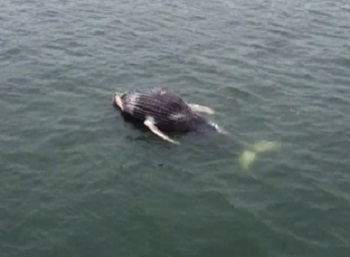
COVID-19 saves right whales by sinking cruise ships
Canada created the Shediac ship restricted zone in April 2020 just a couple weeks before Holland America’s Zaandam was scheduled to sail through that zone on a shipping lane used only seasonally by cruise ships as a shortcut to Quebec City. However, a COVID-19 no-sail order in March 2020 superseded that restriction. Consequently, there was not one Canadian ship right whale strike death in two years and only one Canadian crab entanglement death,,, Zero whales were killed by lobster gear. There has not been one death from lobster gear in the U.S. and only a couple in Canada in over 20 years but the Center for Biological Diversity, with no supporting data, claims the whales are going extinct based on lobster entanglements. >click to read< By Jim O’Connell 07:31
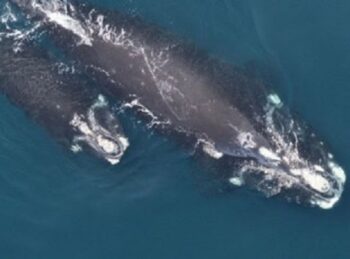
North Atlantic Right Whale: Extinction Is Looming. Everyone’s Fighting.
This May, new rules created for the lobster industry by the National Marine Fisheries Service will become official policy for boats operating in right whale territory. The agency estimates that lobster and Jonah crab traps are responsible for 95 percent of vertical end-line ropes in the areas where whale protections apply and therefore pose the most risk for entangling whales. The Fisheries Service says these changes will reduce the risk of death and serious injury by 69 percent. But in the months after the rules were finalized, the agency has seen pushback from conservation groups, who argue the new protections aren’t enough, and lobster fishing crews, who say the rules will harm their business. >click to read< 14:22
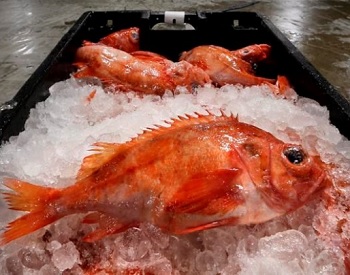
Redfish return sparks Atlantic race to cash in on reopening of commercial fishery
The centre of attention is a large section of the gulf known as Unit 1, stretching from the western coast of Newfoundland across to Quebec’s Gaspé Peninsula and down toward the northern tip of Cape Breton. A federal Fisheries Department moratorium on commercial fishing of redfish was imposed in the area in 1995 and has remained in place ever since. But from 2011 to 2013, research showed that three robust redfish cohorts had propelled growth in the overall stock. “There’s probably more redfish in the Gulf of St. Lawrence now than we’ve ever seen in our recorded history,” >click to read< 07:19
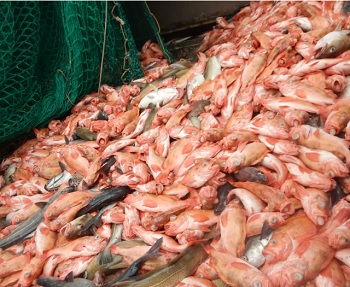
Quebec joins Nova Scotia in seeking historical share of redfish quota
Companies from Quebec hold a little under one-third of the offshore quota, while it’s around 50 per cent in Nova Scotia. The fishery was effectively shut down to protect the species in 1995. However, a now booming population is about to set off a huge harvest in an area known as Unit 1, which encompasses the Gulf of St. Lawrence and portions of the Cabot Strait. Quebec said it’s essential for the federal government to maintain the historical share of quota when large-scale fishing resumes in several years, even if the industry there is not ready. >click to read< 09:14

SEA-NL calls on Premier to draw line in sand for province’s inshore fleet over Gulf redfish
SEA-NL is calling on Premier Andrew Furey to take a stand for the province’s inshore fleet to ensure the sector is the primary beneficiary of the adjacent and exploding redfish stock in the Gulf of St. Lawrence. “Redfish could be to the inshore fleet what Hibernia was to the oil industry, but Premier Furey must draw a line in the sand to get us there,” says Ryan Cleary, interim Executive Director of Seaward Enterprises Association of Newfoundland and Labrador. >click to read< 13:17

The NLGIDC Supports the Position of an Inshore Fisheries Coalition on the New Redfish Fishery
The Newfoundland and Labrador Groundfish Industry Development Council (NLGIDC) clearly supports the position of a coalition of inshore harvester associations, Indigenous nations, and those involved in seafood processing in Newfoundland & Labrador, Quebec and New Brunswick. This coalition issued a News Release on this important issue on October 14, 2021 that called on the Department of Fisheries and Oceans (DFO) to immediately suspend its consultation process on the rapidly growing redfish resource in the Gulf of St. Lawrence. >click to read< 09:57

Shipping container traffic making waves on St. Lawrence/Great Lakes system
On Monday, the container ship Peyton Lynn C, which loaded in Antwerp, Belgium, passed through the locks in Massena and Iroquois, Ontario, on her way upriver on the St. Lawrence heading for the Great Lakes. In her wake, her owners believe, may be a new era in regards to a shipping method for the international waterway. Industry experts say that about 90% of non-bulk cargo worldwide is transported by container ships, with large coastal ports along the Atlantic and Pacific oceans the hubs of that activity. But the container vessel business model has begun to create ripples in the St. Lawrence and Great Lakes. photos, >click to read< 18:19

Underwater gliders will monitor North Atlantic right whales in the Gulf of St. Lawrence
The newest glider will carry a hydrophone, which can identify the calls of right whales and report their locations,,, “There is no one way to effectively determine where the whales are at any given moment when they are in the Gulf of St. Lawrence,” Fred Whoriskey said, “So we need to start blending our approaches.” Aerial surveillance is only good on sunny days with few waves, he said, adding that hydrophones mounted on fixed buoys have their limitations. “This year we are deploying gliders into the shipping channels,” he said. “They go down, listen and detect whale calls and come up to the surface periodically and broadcast information whether there are whales there or not.” >click to read< 11:25

Canada cuts Atlantic mackerel quota in half to ‘rebuild stock’, to be released in two phases to ensure access
Canada has slashed the quota in half for Atlantic mackerel, from 8,000 tonnes last year to 4,000 tonnes this year. “This is a difficult decision that has economic impacts on commercial harvesters and their communities, but the science is clear: stronger actions need to be taken to rebuild the Atlantic mackerel stock,” said Federal Fisheries and Oceans Minister Bernadette Jordan in a news release Friday. That will help ensure fishermen in Newfoundland, where mackerel arrive later in the year, get access to some quota. >click to read< 08:03
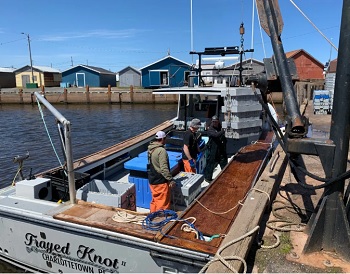
Lobster fishing 101: Everything you wanted to know! From Setting Day to Fishers pay!
In early May, hundreds of Prince Edward Island fishing boats head out into the waters of the Gulf of St. Lawrence to sink their traps and bring back lobsters,,, Jada Yeo has been a fisherman’s helper aboard her father David’s boat, Let Her Go, for the past six years, since she graduated from high school. Sheila Eastman has been North Lake’s harbour manager for 20 years, and is like a mother to most of the fishermen. In fact, her son, one of her brothers and other relatives fish out of North Lake. From Setting Day, lobster boats, sharing up, fishing areas, and terminology preferences such as fishers, fisherman, fisherwoman, with lots of photos!, >click to read< 13:12
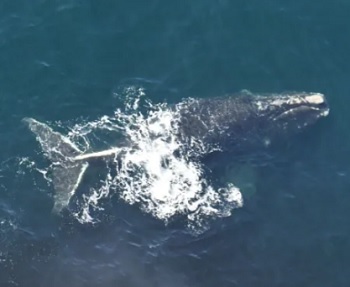
Two North Atlantic Right Whales detected in the Gulf of St. Lawrence cause a season long fishing area closure
As a result, an area east of the Iles-de-la-Madeleine is closed to fishing activities until Nov. 15, while some surrounding areas will close at 5 p.m. on Saturday until further notice. DFO provided a 72-hour notice because of the weather forecast and to allow time for fishing gear to be removed. The crab fishing area known as 12F, east of the Iles-de-la-Madeleine, remains under a 15-day closure that began after the first whale of the year was spotted in late April. >click to read< 13:22
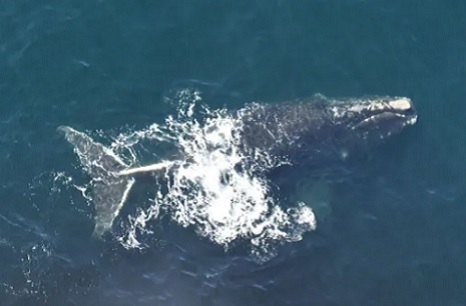
Right whale spotted in Canadian waters, DFO imposes 15-day crab fishing closure
The first North Atlantic right whale of the season has been sighted in Canadian waters, triggering an early and localized snow crab fishery closure in the Gulf of St. Lawrence. Observers flying in a plane spotted the whale Sunday afternoon northeast of the Magdalen Islands in the Cabot Strait.,, DFO said Monday it has responded. “This sighting has triggered a 15-day fishing closure in crab fishing area 12F,” the department said in a statement. Fishing area 12F is east of the Magdalen Islands. >click to read< 17:44
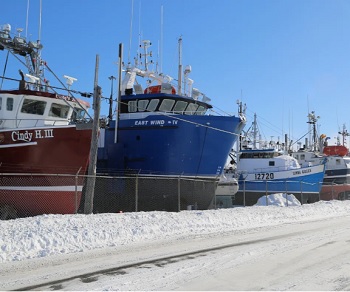
Icebreakers are clearing the way for early Snow crab season with less risk for right whales
New Brunswick’s lucrative snow crab industry is just weeks away from a head start to the season, could result in higher revenue and less risk for North Atlantic right whales. Icebreakers from the Canadian Coast Guard and contracted boats began clearing the waters near Shippagan and Caraquet on the Acadian Peninsula over the weekend. Gilles Thériault, who lives in Tracadie, said fishermen are thankful for the icebreakers. “The quicker we catch our quota, the less danger there is of whales being trapped into ropes,” he said. “We hope that the vast majority of the quota will be caught before the whales arrive.” >click to read< 15:43

Canada outlines its 2021 measures to protect North Atlantic right whales
The Government of Canada remains committed to protecting the endangered North Atlantic right whale. To help prevent entanglements with fishing gear, Fisheries and Oceans Canada is building on last year’s successful measures by continuing to close fishing areas wherever and whenever North Atlantic right whales are present in the Gulf of St. Lawrence, Bay of Fundy, and Roseway Basin Critical Habitat,,, To help prevent collisions with vessels, Transport Canada will be re-implementing its 2020 season measures, including a restriction on vessel speed throughout much of the Gulf of St. Lawrence to protect areas where whales are detected,,, >click to read< 17:06
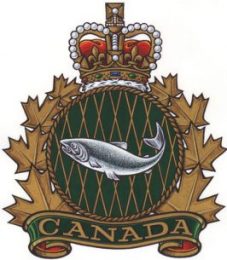
New DFO regulations, 30 major commercial stocks have been identified for rebuilding
Canada is putting into law a requirement that it rebuild depleted commercial fish stocks, starting with 17 stocks that include Atlantic cod off Newfoundland, spring spawning herring in the Gulf of St. Lawrence and three Pacific salmon stocks. They account for more than half the 30 major commercial stocks identified for specific protection in amended Fisheries Act regulations published Jan. 2. >click to read< 11:33

Slowing down big ships not enough to protect right whales from fatal strikes
Current speed restrictions for ships moving through Canadian waters will not prevent North Atlantic right whales from being killed if struck, according to new research that also determined smaller vessels are capable of deadly impacts. “Slowing big ships down does not reduce the death rate as much as we hoped it would,” said Brillant, adding that larger ships obeying current speed restrictions in the Gulf of St. Lawrence, where many right whales feed in the summer, still have an 80 per cent chance of killing a whale if one is struck. >click to read< 08:57
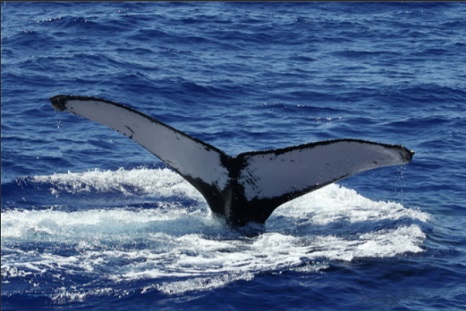
No North Atlantic Right Whale Deaths In Canadian Waters This Year
It has been a good year for the endangered North Atlantic right whale in Canadian waters. Federal officials say no deaths or new entanglements have been reported to date. The government credits “significant” action taken to help protect the whale. A new season-long fishing area closure protocol was introduced in the Gulf of St. Lawrence based on where whales were detected. Fisheries and Oceans Canada also expanded the scope of where temporary and season-long closures were applied. >click to read< 15:50

Snow crab fishing rights: First Nations leaders say they’ll drop court action if government agrees to mediated settlement
The chiefs of Madawaska and Tobique First Nations say they have been seeking to exercise their treaty right to fish snow crab for 25 years, and point to volatile protests over lobster fishing as an example of the consequences of letting such disputes go unresolved. “Our Aboriginal right to engage in the fishery is not being recognized, the consequence of that is playing out before us in Nova Scotia,” Tobique Chief Ross Perley said in a news release Tuesday. >click to read< 12:04

The historic ups and downs of the Acadian-Mi’kmaq relationship
Mi’kmaq fishermen, emboldened by a decades-old Supreme Court of Canada ruling affirming their treaty right to hunt, fish and gather in pursuit of a moderate livelihood, spent another day trying to drop their lobster traps in the waters there. Pitted against them were non-indigenous fishers who claim that the natives are threatening the local lobster fishery’s sustainability, and who have been making their point by cutting First Nation traps, and trying to pressure buyers not to purchase their harvest. Once again, the federal government stood mutely by, unwilling to clarify the question of what constitutes a “moderate livelihood” fishery, and then, by omission, further fuelling a situation that looks like it could turn violent at any moment. It sounds, therefore, strangely like the scene I encountered 21 years ago in Burnt Church, N.B. >click to read< 17:38
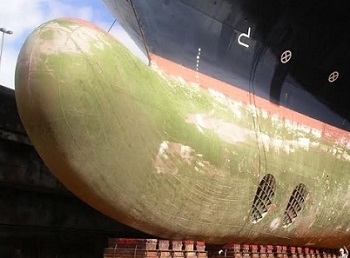
The Judge has ruled! NMFS must list the North Atlantic Right Whale entanglement facts on paper. Case Closed!
Judge Boasberg has ruled! A new accurate ESA analysis has been ordered by next June. The National Marine Fisheries Service just needs to put the lobster entanglement facts on paper and it’s “Case Closed” Not only was there an unusual mortality event in the Gulf of St Lawrence. The Right Whales stopped reproducing. Basically the whales moved up into the South West Gulf of Saint Lawrence in 2015 and took the crab fishermen by surprise and also they set up feeding on copious copepods at the mouth of the St Lawrence River where the Spring flood of nutrients kicks off phytoplankton blooms. Unfortunately this is directly under a shipping lane used solely by cruise ships who traveled at night starting at the end of April.,, by Jim O’Connell, >click to read< 20:26
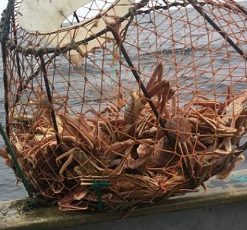
Cape Breton snow crab fishery escapes impact of right whale closures, Different story in New Brunswick
While a right whale sighting earlier this month triggered a closure to the snow crab fishery in western Cape Breton, the closure had virtually no impact. But unlike closures in other parts of the Gulf of St. Lawrence, these shutdowns had virtually no impact on the area’s lucrative fishery. “That’s something we’re discussing. Are we lucky or are we just in that sweet spot?” said Basil MacLean, a Cape Breton snow crab fisherman and president of the Area 19 Snow Crab Fishermen’s Association. In New Brunswick, where the boats and quotas are larger, it’s been a different story in 2020. “24 out of 45 members from the Acadian Crabbers Association each left significant amounts of crab in the water this spring,” >click to read< 19:15

Whale info way off, by Maine Lobsterman Leonard Young
Reading Bill McWeeny’s July 23 commentary bothered me a great deal. His statement that right whales have never been so close to extinction since they were hunted is untrue. I’ve been a lobsterman for almost 50 years, and we’ve been dealing with the whale issue for almost two decades. When we started this process, we were told there were 200 of these animals. Mr. McWeeny decided to omit the fact that we had modified our gear many years ago with sinking ground lines, breakaways in our end lines and more traps on end lines to decrease end lines. Since we did this, entanglements decreased considerably. These animals had increased to almost 500. Then they changed their feeding ground,, by Maine Lobsterman Leonard Young, Corea >click to read< 11:20

Atlantic Canada Fish harvesters still waiting for federal Coronavirus aid to flow
As the policy analyst for CFIB in P.E.I., in early May I worked with my colleagues to write a letter to the Minister of Fisheries and Oceans and Member of Parliament for Nova Scotia’s South Shore, Bernadette Jordan. This letter pleaded for help for fish harvesters, the folks who risk their lives on the water harvesting one of Atlantic Canada’s most important resources and exports, lobster. Lobster harvesters were deeply concerned about a quickly evaporating market and a glut of product driving down the price of their livelihood.,, While this was going on, the federal government was rolling out its array of programs to subsidize business: the Canada Emergency Business Account (CEBA) , the Canada Emergency Response Benefit (CERB), the Canada Emergency Wage Subsidy (CEWS) and the Canada Emergency Commercial Rent Agreement (CECRA). by Marley Kingston >click to read< 07:43

Report: 4 of 5 Gulf of St. Lawrence area right whale deaths investigated last year were caused by ship strikes
The report, compiled by the Marine Animal Response Society and Canadian Wildlife Health Cooperative, says vessel strikes caused four out of the five whale deaths investigated last year. A total of nine right whales were found dead in and around the Gulf of St. Lawrence in 2019. The report released Wednesday focused on the necropsy results for five right whales, all found dead between June and July 2019. It found vessel strikes caused the death of four of them, but the necropsy investigation could not determine the cause of death of the fifth. >click to read< 14:42






